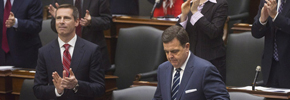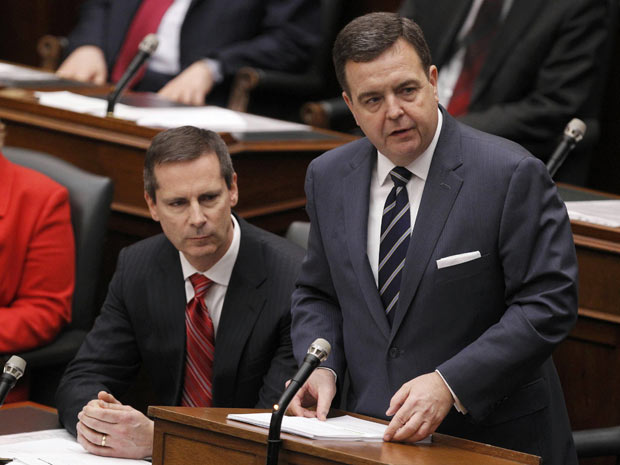Sima Sahar Zerehi – I have this distinct memory from my youth, gathering around the television in our small Scarborough apartment with my sister and parents, watching the game show Family Feud.
It was a family favouite, we all delighted in the drama of contestant families unraveling when faced with the daunting prospect of winning or losing thousands of dollars of prize money. Their dysfunction put on display before millions of television viewers always succeeded in making our family quirks seem insignificant in comparison.
One episode in particular featured an American family from the South, the category on the board was names of fruit starting with the letter ‘a’. The pressure was on, as all hope rested on the father, a pink-faced bald man with a jolly round belly and good-natured blue eyes, to pick from the suggestions offered to him by the family members on his team.
He had a number of good options on hand: “apple,” shouted his wife, “apricot,” urged his daughter, “avocado,” offered his brother, “acai,” suggested his sister. After a few moments of furrowing his brows and wringing his hands the father’s face lit up with triumph as he bellowed out “I think I’m going to go on my own with this one, I think I’ll go with ARANGE!”
For some reason, this memory was all I could think of as I plunged through Finance Minister Dwight Duncan’s proposed austerity budget for Ontario. After spending considerable money and time on a report on public-service reform by economist Don Drummond and reviewing the report’s 362 cost-cutting recommendations, Duncan decided to go his own way.
Although the Liberal budget can’t be called bread and roses, it’s a long way off the doom and gloom outlined in the Drummond report. Drummond offered a plan that targeted everything from early-childhood education to massive health care cuts, providing a blueprint for a new Ontario stripped of much of its services and programs. Looking at Duncan’s report it seems like the Finance Minister decided that he could achieve fiscal responsibility by narrowing in on a single area – wage freezes.
Public Sector Workers
Even with a cursory glance it becomes clear that the ones hardest hit in Duncan’s budget are public sector workers. The budget outlines how the province plans to spend $17.7 billion less than it first estimated over the next three years.
Approximately $6 billion of the costs of the proposed savings are to come from the wages of teachers, doctors, nurses, hospital workers and civil servants. Taking inflation into account, all of these workers will be subjected to wage cuts.
In addition to wage cuts, public servants also face reduced pension payouts or higher contributions.
In the past, the Liberals have resisted the Tories call for mandated wage freezes. In the 2010 budget the Liberals attempted asking for a voluntary wage freeze, which predictably yielded little results.
This time, it seems like the McGuinty Liberals are borrowing from the Conservatives’ playbook, with a threat to legislate a wage freeze in 4,000 different labour agreements if negotiations cannot be reached. The prospect of back to work legislation is also on the radar.
Poised for a fight, labour leaders have vowed to go on the offensive to save the pensions and salaries of their members.
Other measures in the budget
In addition to massive wage freezes the government hopes to achieve savings through a series of spending cuts in areas such as health care, with a promise to roll back health spending from 6.5 per cent to 2.3 per cent.
Plans to build or redevelop some hospitals will be put on hold including the West Lincoln Memorial Hospital, Sunnybrook Health Science Centre hemodialysis unit, South Bruce Grey Health Centre emergency project, Wingham and District Hospital project. The Brockville General Hospital and St. Thomas Elgin General Hospital projects will be scaled back.
Other measures in the budget include plans to amalgamate school boards and close empty or underused buildings.
Some jails and youth correctional facilities will be closed, seniors with an income of more than $100,000/year will be asked to pay more for drugs, social assistance and disability rates will be frozen, and hydro consumers who use more than 3,000 kilowatt hours a month will lose a 10% rate cut.
The good news is that contrary to the advice offered in the Drummond report, classroom sizes and full-day kindergarten will not be affected.
Is another election on the horizon?
While the Duncan budget’s brazen attack on public sector workers should have pleased the Tories who’ve been calling for wage freezes and back to work legislation for years, Hudak is refusing to make any concessions.
Speaking about Ontario’s projected $30-billion deficit by 2017-18, Hudak stated:
“Sadly this government has shown again today that it simply does not grasp the seriousness of the situation, the need for swift integrated action to address the jobs crisis and a debt crisis in the province.”
The Tory leader promised that all his members would be in the Legislature to vote against the budget.
NDP Leader Andrea Horwath took a more measured approach.
“There is nothing in this budget that speaks to the jobs crisis here in Ontario,” she stated.
“It falls very short in terms of job creation plans.”
Despite her criticism of the budget Horwath has not gone as far as Hudak claiming that she will take the time to consult Ontarians on the matter.
With a Liberal minority at play, the NDP now holds the balance of power, making the key decision that will determine if the government will stand or fall.
Attempting to gain the NDP’s support, Duncan’s budget included a significant victory for Horwath, as it adopted her stance on freezing corporate taxes.
The earliest the government could fall in the Legislature would likely be April 26, meaning an election on May 24 or May 31.
ONTARIO BUDGET HIGHLIGHTS:
Overall plan:
Save $17.7 billion over the next 3 years.
Increasing revenues by $4.4 billion without tax hikes.
This year’s deficit will be $15.3 billion – down from the $16 billion that had been anticipated.
Next year’s shortfall is slated to be $15.2 billion.
Cancelling or postponing $900 million in infrastructure programs over 3 years to save $120 million in interest costs. Over 6 years, the government plans to put off $3.2 billion in projects, saving $890 million.
Salaries & Pensions:
Wage Freezes: The wages of hundreds of thousands of public servants including teachers, doctors, health workers, nurses and civil servants will be frozen through negotiation or by legislation.
Zero increases for MPPs, executives at hospitals, universities, colleges, school boards and agencies for another two years
Extending the freeze on executive compensation to other government agencies, such as ORNGE, the LCBO, Ontario Lottery and Gaming Corporation, and Local Health Integration Networks.
A freeze on MPP salaries announced in 2009 is extended for two more years. A pay freeze for executives at hospitals, universities, colleges, school boards and government agencies is extended for another two years.
Public sector pensions: Revamping public service pensions to save billions.
OPP overtime: The province will move to trim OPP overtime costs by $3.5 million a year over the next three years and delay a plan to replace police cruisers.
Education:
School closures: Reducing current financial support to keep under used schools open starting 2012/14, cutting capital funding to schools
Education: Cutting school computer and staff professional development funding, cutting EQAO spending and Program Enhancement Grant, cutting curriculum and teaching specialist positions, freezing teacher pay
Victory laps: Capping the number of successful secondary credits at 34 to cut number of students going for fifth year of high school
School buses: Continue competitive bidding process for providers
School boards merge: Some of Ontario’s 72 district school boards will be merged, though public and separate school boards will not be folded together
Health Care:
Seniors’ drugs: The top five percent, high-earning Ontarians 65 and older will pay a new income-tested deductible starting August 2014 based on how much they make. Single seniors making over $100,000 and senior couples making over $160,000 a year will pay 3% more on prescription drugs based on income. Single Senior making $101,000 a year will pay $130 deductible; senior couple making $161,000 would pay $230. This measure is slated to save $30 million annually.
Hospitals: Cancelling West Lincoln Memorial Hospital redevelopment, Sunnybrook Health Science Centre hemodialysis unit replacement, South Bruce Grey Health Centre emergency project, Wingham and District Hospital project; scaling back Brockville General Hospital and St. Thomas Elgin General Hospital projects.
Doctors: Reducing per-resident funding to medical schools, freezing doctor compensation
Taxes & Business:
Taxes: Axing planned cuts in corporate taxes, not extending Next Generation Jobs fund contracts, scaling back Commercialization and Innovation Network Support
Keeping corporate income taxes, which has been scheduled to gradually drop to 11 per cent in July and 10 per cent next year, frozen at 11.5 per cent through 2017-18.
Freezing the Business Education Tax, which had been scheduled to decrease, starting next year, saving $300 million a year.
Media/Arts/Attractions:
TVOntario: Government asks public broadcaster to find new revenue sources
Culture: Entertainment and Creative Cluster fund program axed one year early
Attractions: Cutting funding by 1% to Art Gallery of Ontario, McMichael Canadian Art Collection, Ontario Heritage Trust, Ontario Science Centre, Royal Botanical Gardens, Royal Ontario Museum, Science North, St. Lawrence Parks Commission.
Festivals: Provincial funding for Toronto’s Luminato festival will be reduced in the next two years and eliminated entirely by 2014-15. The province will commit $1.5 million to the festival in 2012-13 and $2 million the following year before funding dries up.
Tourism: Seven of the province’s travel information centres will be closed due to a drop in visits in recent years.
Natural Resources: Some stocked fishing and park-based recreational activities ending
Criminal Justice System:
Junior jails: Close Bluewater Youth Centre, shrink Cecil Facer and Brookside Youth Centre
Jail: Closing older jails, vacating old buildings no longer needed. The Toronto West Detention Centre as well as older jails in Chatham and Brantford will be closed.
Courts: Pursing private partnerships to build, maintain courthouses
Transportation:
Transportation: Ending subsidy to Ontario Northland Transportation Commission, cutting spending for northern highway rehabilitation by $208 million over six years
Highways: Delaying some highway expansion and HOV projects but proceeding with Windsor-Essex Parkway, 407 East Extension and 417 HOV lanes
New legislation will clear the way for road tolls on the Hwy. 407 extension. The project will extend the existing toll road to Hwy. 115 in Clarington from its current terminus near Pickering.
Electric Cars: Two separate programs, one to encourage consumers to buy electric cars and another to help pay for charging stations, will be folded together. The programs had a “lower than expected uptake.” The move will save $43 million over three years.
Drive Clean: To be handed over to private operator
Other:
Social assistance: Freezing rates, phasing in promised Ontario Child Benefit hike
Ministries merge: Economic Development Ministry and Research and Innovation Ministry
LCBO: Opening up to 25 new and larger LCBO stores each year, bringing in an additional $100 million in revenue.
Electricity: The Ontario Clean Energy Benefit will change. The plan gives residential, farm and small business users a benefit equal to 10 per cent of their electricity bill. The province will bring in a 3,000-kilowatt hour cap on OECB payments. This will save an estimated $470 million over three years and would not affect most homeowners.
Property inspections: Leaving it to municipalities







Hi I am 18 years old currently studying. I ask you to please do the moral thing and use your site to spread the truth so we can blow the lies and cover ups out of the water and maybe earth wont be so ravaged by war pollution and greedy lying theiving bankers and politicians….. is anyone out there willing to change the world for the better?